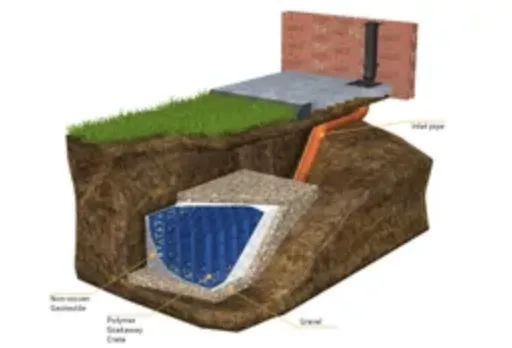
Surface Water Drainage: What is the Water Runoff Law for Property
As heavy rainfall becomes more common across the UK, understanding the legal responsibilities regarding surface water runoff from your property is increasingly important. Inadequate surface water drainage can lead to water discharge onto roads and neighboring properties, potentially causing disputes and legal issues. Here, we explore the legislation surrounding surface water drainage, property owners' responsibilities, and steps to avoid legal complications.
What is Surface Water Drainage?
Surface water drainage deals with rainwater that falls onto properties, roads, and other surfaces. Effective drainage systems direct this water away from your property, often into rivers, brooks, and streams.
The Law on Surface Water Drainage in the UK
The key legislation governing surface water drainage in the UK is the Flood and Water Management Act 2010. This Act was introduced to address the increasing risk of flooding due to climate change and urban development.
Key Points of the Flood and Water Management Act 2010
Sustainable Drainage Systems (SuDS): The Act promotes the use of SuDS, which aim to manage surface water runoff in a more sustainable manner. SuDS techniques include permeable paving, green roofs, and rainwater harvesting systems.
Drainage Approval: Any construction work affecting drainage must have an approved drainage system before commencement. This includes all types of building work, such as patios and driveways.
Prevention of Flooding: The Act focuses on reducing flood risk by managing surface water runoff from homes and developments.
Property Owners' Responsibilities
Property owners are responsible for ensuring that their drainage systems effectively manage surface water runoff to prevent flooding on their land and the public highway. Failure to do so can result in enforcement action and potential legal consequences.
Practical Solutions
Implementing SuDS can be an effective and often inexpensive solution to manage surface water. Options include:
Water Butts: Collect rainwater from gutters to use in your garden.
French Drains: Trenches filled with gravel and a perforated pipe to divert water away from your property.
Permeable Paving: Materials that allow water to infiltrate the ground, reducing runoff.

Legal Responsibilities for Surface Water Runoff
If surface water runoff from your property causes damage to neighboring properties or public areas, you could face legal action. It’s essential to install and maintain adequate drainage measures to manage runoff effectively.
Natural vs. Artificial Runoff
While natural runoff from higher ground onto lower ground is generally permissible, runoff caused by property improvements (such as paving over gardens) is not considered natural and must be managed appropriately. Water from roof drainpipes, for instance, cannot be directed onto a neighbor's property without consent.
The Right to Drain Water
The right to drain water onto neighboring land is a complex issue. Generally, you must obtain your neighbor's consent to discharge surface water onto their property. If this is not possible, you should explore alternative drainage solutions to manage water on your own land.
Common Law Right to Drainage
Under common law, natural water flow across land is allowed to continue onto neighboring properties. However, any interference that changes the flow, such as channeling water through a downpipe, is not permitted without proper drainage measures.
Changes in Surface Water Drainage Law
In recent years, there have been significant changes to surface water drainage regulations, including the introduction of SuDS regulations in 2015. These regulations require new developments and major renovations to incorporate sustainable drainage solutions.
SuDS Regulations
Mandatory Implementation: Local authorities now have greater responsibility for approving and enforcing SuDS in new developments, making them a mandatory requirement.
Benefits: SuDS help to manage surface water at its source, promote infiltration, and reduce flood risk.
Conclusion
Understanding and complying with the law on surface water drainage is essential for protecting your property and avoiding legal issues. By implementing effective drainage solutions and maintaining them properly, you can manage surface water runoff efficiently and sustainably. For further guidance, consult with drainage experts and stay informed about any changes in regulations to ensure your property remains compliant and protected.

